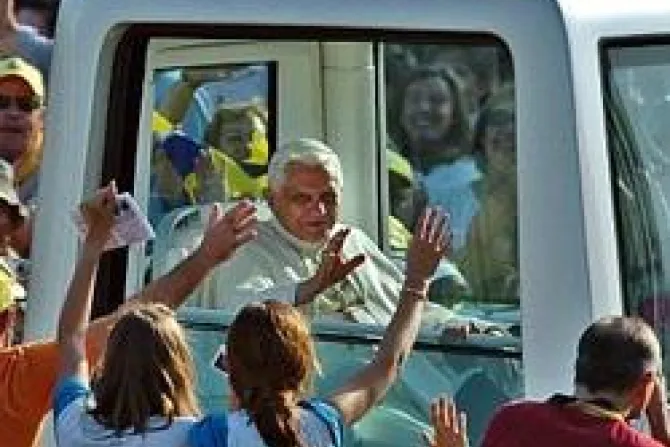London, England, Sep 7, 2010 / 18:10 pm
Organizers of the papal visit to England and Scotland have released a detailed itinerary for the Holy Father's journeys in the popemobile from September 16 to 18. Pope Benedict's routes will take him through Edinburgh and London, with several stops highlighting the rich Catholic heritage of Great Britain.
On Thursday, September 16, beginning around 12:30 p.m., Pope Benedict will travel in the popemobile through Edinburgh in Scotland, from Holyrood Palace along Abbeyhill, Regent Road, Princes Street, Lothian Road, Tollcross and Morningside. His destination on the first afternoon of his visit is the official residence of Cardinal Keith O'Brien.
On the evening of Friday, September 17, the Pope will ride in his vehicle from Lambeth Palace, beginning around 5 p.m. and crossing Lambeth Bridge, traveling along Millbank, to arrive at the Palace of Westminster around 5:15. Organizers say that there will be minimal space along this route, and limited vantage points available for those wishing to catch a glimpse of Benedict XVI.
A larger window of opportunity for those hoping to see the Holy Father will be available the next day, as he travels through London beginning at 6 p.m. That evening, he will travel in the popemobile along Horse Guards Road, The Mall, Constitution Hill and Hyde Park Corner. At Hyde Park he will lead a Prayer Vigil from around 6:30 p.m.
Archbishop Vincent Nichols described the historical and contemporary significance of stops planned during the papal visit, the first undertaken to England and Scotland by a Pontiff in his capacity as a head of state. “From this country's point of view,” the archbishop remarked, “there are profound historic and cultural implications and ramifications for the visit.”
Archbishop Nichols predicted that “the image of Her Majesty The Queen welcoming Pope Benedict” and of the two “formally greeting each other,” will “resonate through the story of this land.” Another unprecedented and historic moment, he said, will occur “when the Pope enters Westminster Hall on the Friday to address politicians, diplomats” and “leaders of this society.”
In addition to these important state functions, Pope Benedict XVI plans to mark some of the spots associated with the history of the English Church, including the tumultuous events of the last 500 years. According to the archbishop, “The Pope will pause at the spot at which Saint Thomas More, the Lord Chancellor of England, was condemned to death in 1535 for his Catholic faith.”
Benedict XVI will be accompanied by the Anglican Archbishop of Canterbury, Rowan Williams, as they go to pray at the tomb of St. Edward the Confessor, the canonized King of England who built Westminster Abbey. This moment in the Pope's journey, Archbishop Nichols remarked, would likewise “enable us . . . to reach back into the deeper roots” of the English people and their historic Catholic faith.
Pilgrims and residents hoping to see the Holy Father as he passes by in the vehicle are advised by the Metropolitan Police to make their preparations early, and to aim for the large central London routes “to avoid disappointment.”


